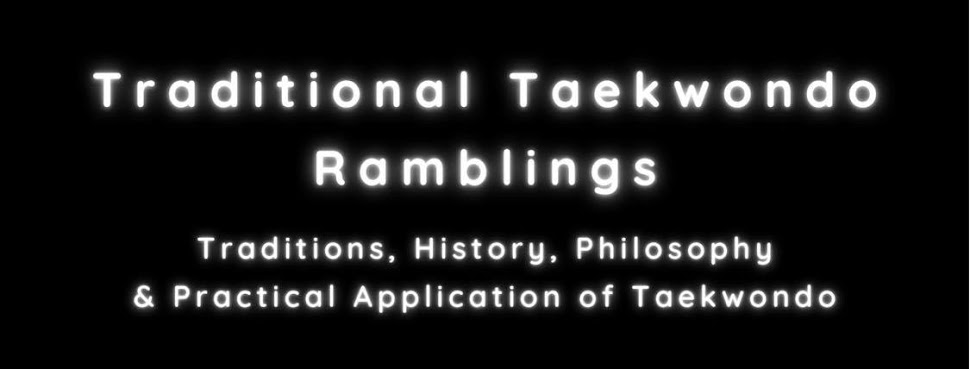 Here is one of my takes on the opening movements of Taegeuk Sa Jang. This can be considered
Here is one of my takes on the opening movements of Taegeuk Sa Jang. This can be considered "byonhwa eungyoung" or 변화응용 which means a variation/change in application or usage. The reason for this is that the striking surface of the spear hand has changed to palm heel strike as well as the fact that I do not move forwards in the second move as in the form. It is still something I consider an application of Taegeuk Sa Jang as the gust of the movement or the underlying principles remain the same. I have changed the striking surface but I am still striking. I do change the stance I am in but I dont step forward. The step forward in the form could be argued to be follow-through. I do have other applications of these movements, but not that would be trained and drilled so easily on the "makki tul" or 막기틀.
I dont really have an opponent here, but I do have an arm and a target :-P Picture the stick to be a haymaker which I step on the inside of the opponent and "flinch-block". Once I make contact I trap the arm and let the other one slide straight into the side of the neck. This is movement one in Taegeuk Sa Jang. From there if the opponent is not allready knocked out, I push the arm that originally attacked me down and keep it there to create an open path for the palm heel strike to the chin. I drill this on both sides. Its not easy to see the leg work but I move almost straight forward (at a slight angle), and end up in dwit koobi (back stance). In the form you pull the arm toward your chest and dwit koobi is great for pulling. So you do not just trap the arm you also pull him onto your knife hand strike. I can not pull as much on this blocking apparatus ("makki tul" or 막기틀) but I do what I can to similate it. The follow up movement the palmheel I shift my weight forward into the strike by changing from dwit koobi to ap koobi (long front stance) but I remain largely in place.
The blocking apparatus was described as early as 1965 in Choi Hong Hi`s book Tae Kwon Do Art of Self Defense, and he also included the training tool until at least 1986 in the 15 volume Encyclopedias. I do not have any newer references but I doubt he ever removed it. It was a popular tool in the root martial arts of Korea. Note that my version is a lot simpler than the original design. It is easy to make and inexpensive though :-P I have fastened to elasitc cargo strops around a post and tucked a stick in between the strops and the post itself. I then tied my sweater to the post so I would not hurt my hands too much when I sometimes hit the corners of the post.
I think we should reintroduce both the blocking apparatus and the striking post in Taekwondo. These tools are great for making sense of the traditional basic techniques that are within the Poomsae. Neither can replace the need for real live practise but when you are without a partner you can only get so far by shadow boxing or doing solo performance of forms alone. With the striking post you understand how to develop power and why the basics are just like they are + you are actually hitting something. When playing with the blocking apparatus you are likewise actually dealing with a simulated limb that you get out of the way and which provides some resistance to your movements. It is great to learn how to stick with the attacking limb, redirect it, hooking, trapping etc.

No comments:
Post a Comment